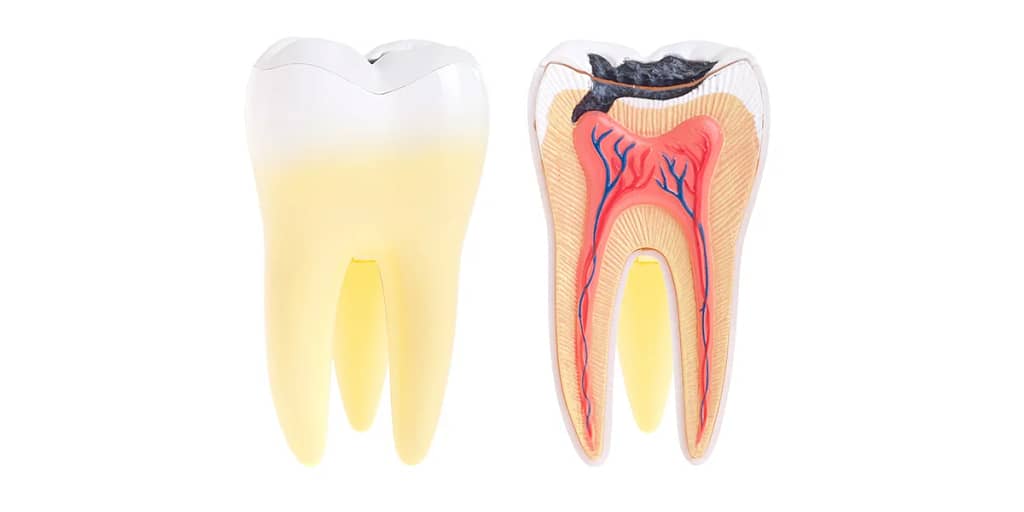Endodontic Retreatment
Have you ever undergone a root canal hoping that the pain would be permanently relieved, only to discover months or years later that the same tooth still causes discomfort?
A tooth’s nerve may be removed, but occasionally the tooth doesn’t recover as expected. It may be a symptom that the tooth requires endodontic retreatment if you continue to have pain after your root canal has healed. If this is the case, arrange a consultation with our endodontist at Highline dental practice, New York, for a diagnosis, and be sure to ask them the questions listed below.
What Is Endodontic Retreatment?
Root canal-treated teeth can last a lifetime with good care, but those teeth can heal incorrectly and develop discomfort or illness months or even years after the procedure. You have a second opportunity to save the tooth with endodontic retreatment.
Suppose this occurs to one of your previously treated teeth. Dental pain or discomfort is lessened and accelerates recovery with extra treatment.
What is the Cause Of Unrecovered Treated Teeth?
As with any dental or medical procedure, your tooth could not heal as anticipated after the first procedure for a variety of reasons, such as
- The first approach did not offer any therapy for curved or narrow canals.
- Complex canal anatomy may be undetected during the initial procedure.
- The crown placement or other repairs was delayed following the endodontic operation.
- The repair did not shield the inside of the tooth from salivary contamination.
- A tooth that has had effective treatment may also be in danger from a new issue, such as
- A new infection in the tooth might be brought on by fresh decay that exposes the root canal filling to microorganisms.
- A tooth might get infected again if a crown or filling is loose, fractured, or shattered.
- There is a fracture in a tooth.

What Options Do I Have for Treatment?
Your dentist likely stated that tooth extraction was the only other choice for therapy when you decided on your initial root canal procedure.
Your endodontist could recommend retreatment or endodontic surgery if you currently suffer discomfort in that tooth. In endodontic surgery, a surgical incision is performed at the tooth’s root’s tip to remove the affected area surgically. This procedure is also referred to by another name Apicoectomy.
The only other option is to remove the tooth in addition to endodontic retreatment or surgery.
Endodontic Retreatment Procedure
An endodontist will initially provide local anesthesia during retreatment. And then, the endodontist will reopen your tooth during retreatment and remove the filling materials put in the root canals during the first operation. The endodontist thoroughly inspects the tooth to look for new infections or extra canals. The endodontist then treats any infection and shapes and cleans the canals before inserting fresh fillings.
A temporary filler is then used to close the hole. The tooth should subsequently be sealed and protected by a more durable repair. In rare circumstances, the endodontist may more thoroughly seal the tooth in anticipation of the placement of a crown by the general dentist.
What Can I Anticipate During the Endodontic Recovery Process?
While every circumstance is unique, your dentist will provide tailored post-procedure recommendations. If you have endodontic surgery, keep in mind that your recovery period can be a little longer.
If there was discomfort or infection before the surgery, your tooth might be sensitive for the first few days after treatment.
Any discomfort brought on by tissue inflammation can be relieved by using over-the-counter painkillers, which your dentist might suggest.
Avoid aggressive brushing near the surgically treated tooth and eating ice or hard foods with that tooth if you recently had surgery.
Call your endodontist as soon as you feel severe pain or notice pus leaking from the surgery site.
Scheduled A Consultation
Our skilled endodontist at Highline Tooth Practice in New York will identify the root of your infection and administer the appropriate care to resolve your dental problems. Our endodontists have a lot of expertise in managing the risk and complications associated with root canal treatment.
Schedule a consultation with Dr. Kim at the Highline dental office, who can assist you with your dental needs and advise you on the best course of action for maintaining your oral health and a radiant smile.
FAQ
1. How long does endodontic retreatment take?
A repeat root canal is refered as endodontic retreatment. Hence, if you can recall how long your initial procedure lasted, the time for the retreatment ought to be about the same. It takes around 90 minutes on average.
2. When does a tooth need endodontic retreatment?
A tooth might get infected again if a crown or filling is loose, fractured, or shattered. There is a fracture in a tooth. The endodontist will reopen your tooth during retreatment and take out the filling materials that were put in the root canals during the first operation.
3. What is endodontic retreatment?
Root canal retreatment is a non-surgical process that entails removing the tooth’s root canal fillings before cleaning, shaping, and obturating the canals.
4. What are the steps of endodontic retreatment?
- Re-Root canal treatment involves
- Removing the infected root filling,
- Cleaning the canal,
- Replacing the root filling.
5. What happens if root canal retreatment fails?
You could require an apicoectomy if the retreatment again fails. In this surgery, the tooth root’s tip is cut off and replaced with a filling. You could even fear losing your tooth if your root canal procedure fails. But, if it is found promptly, there are solutions for restoring your tooth.
